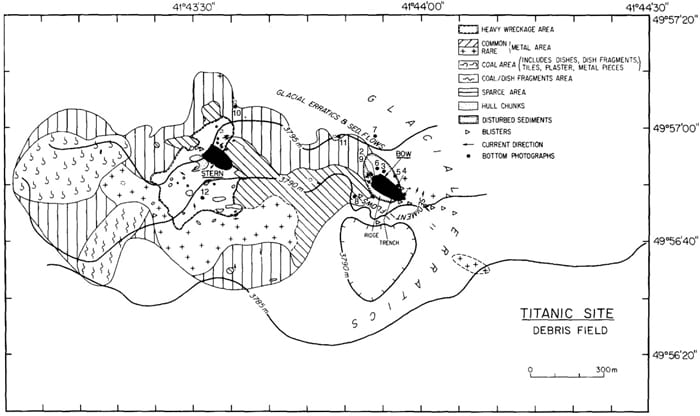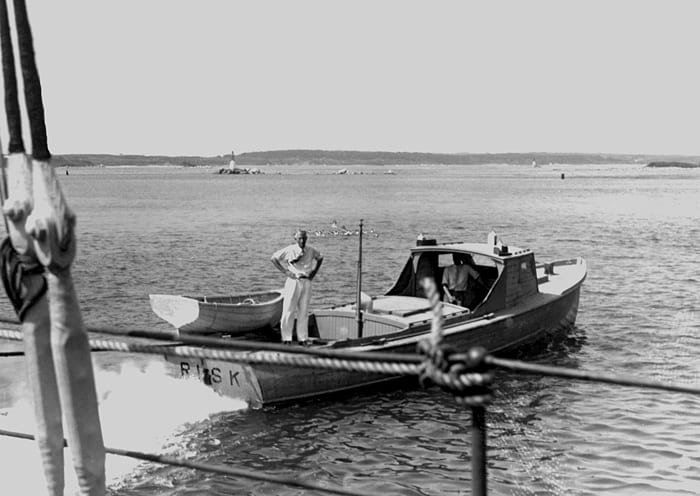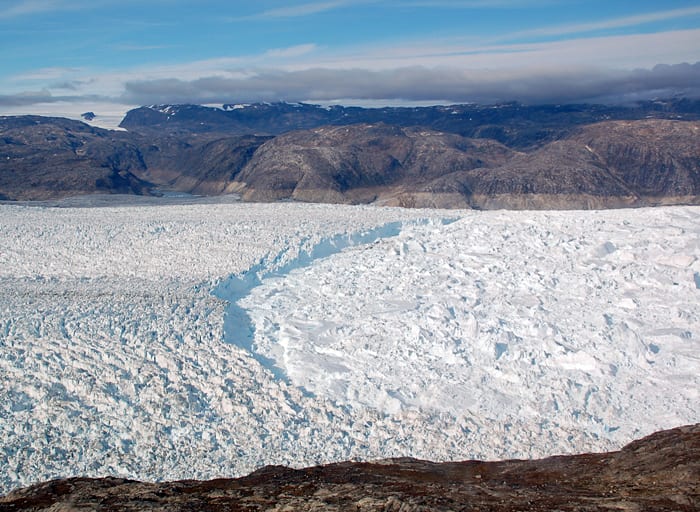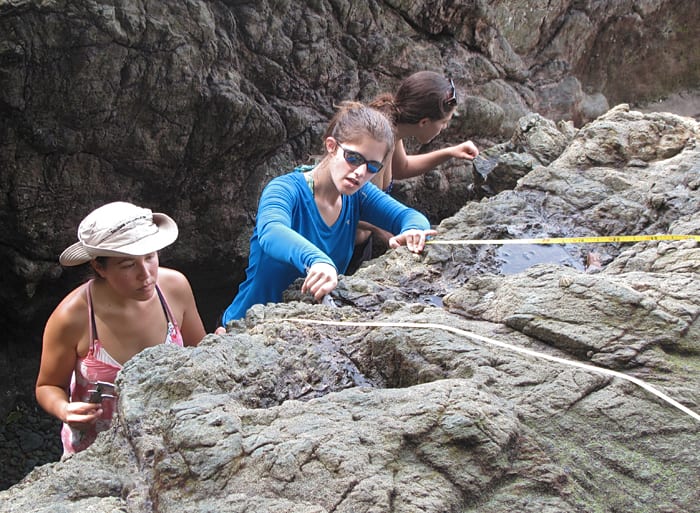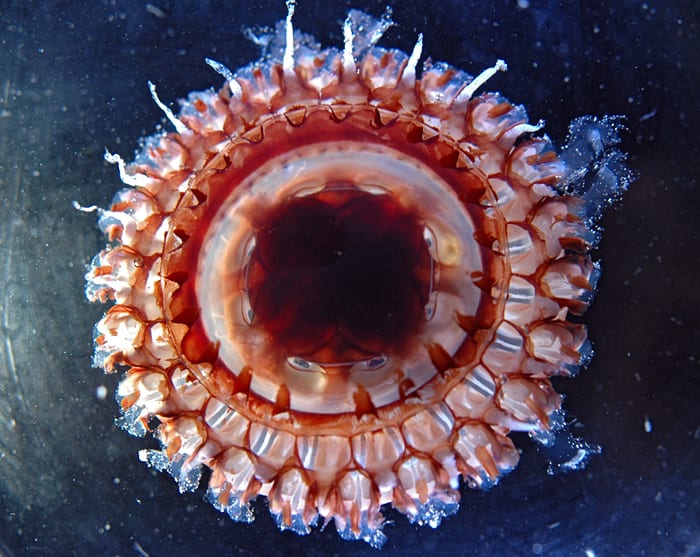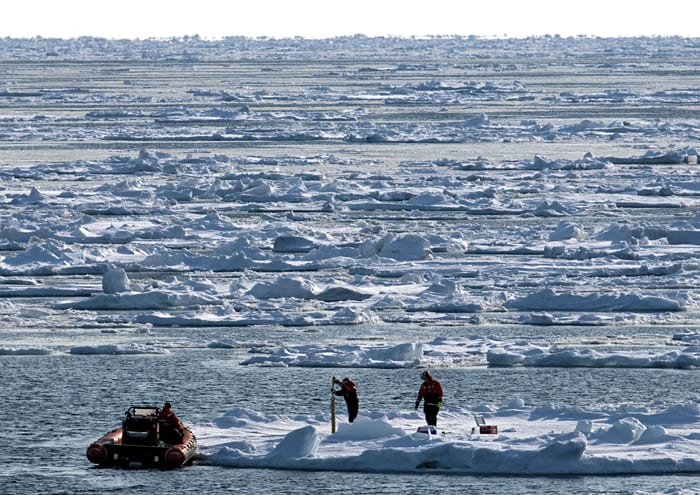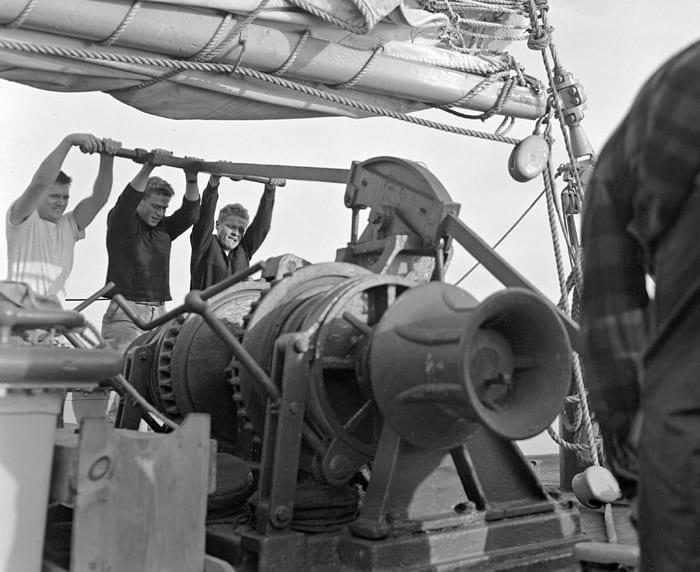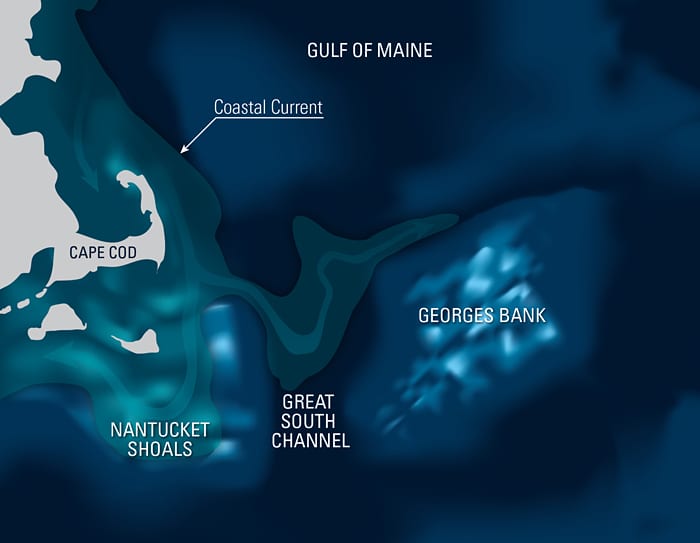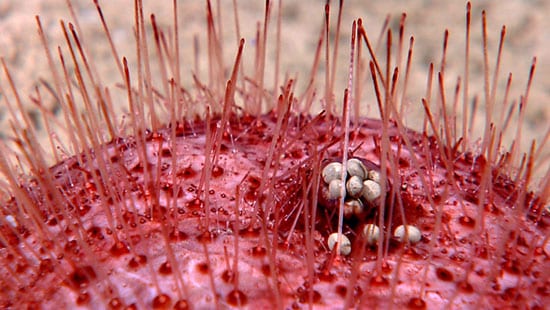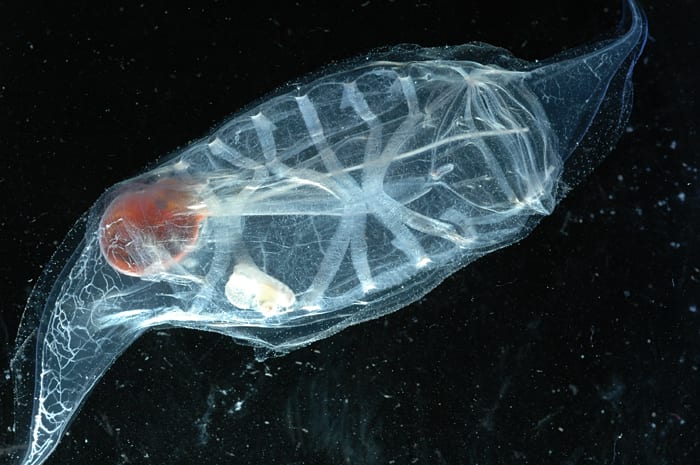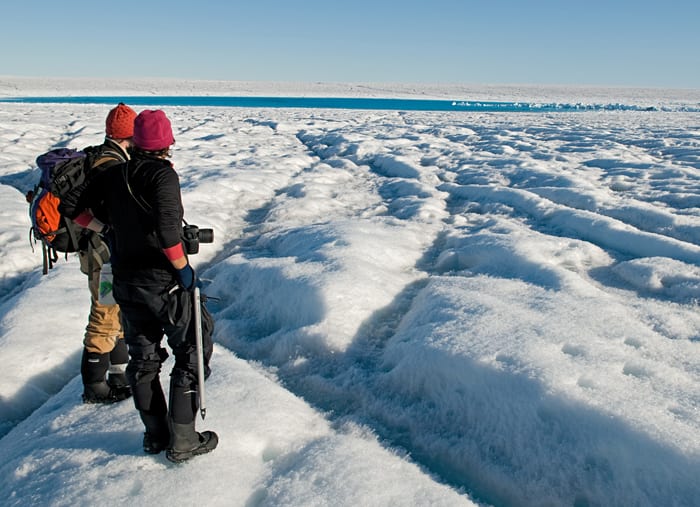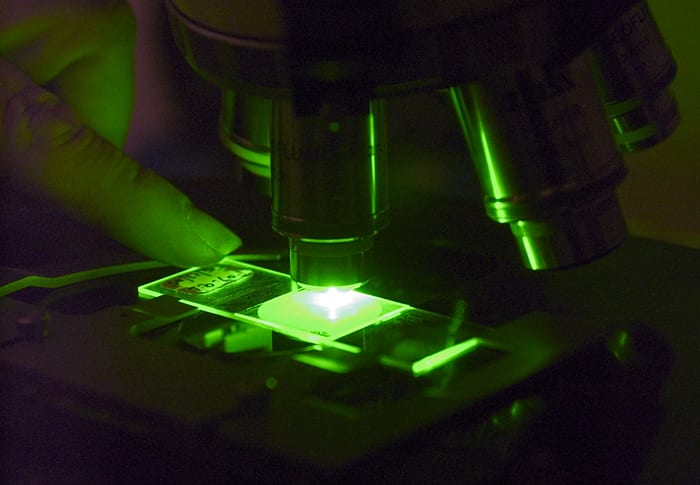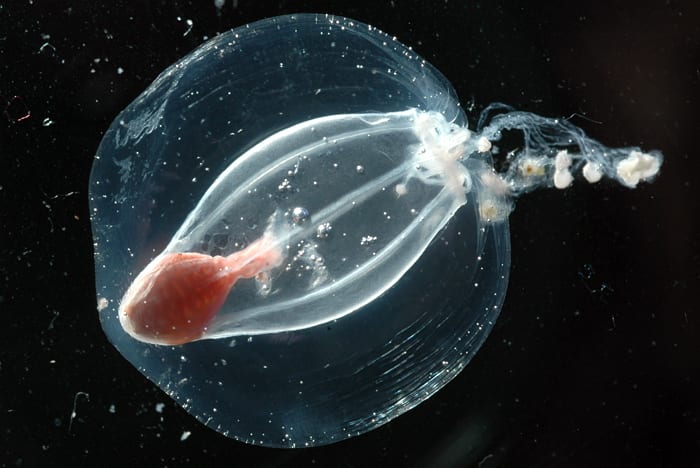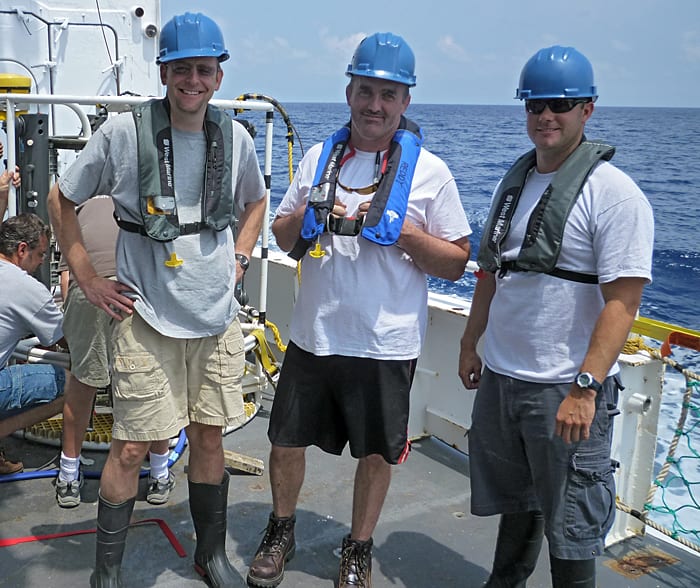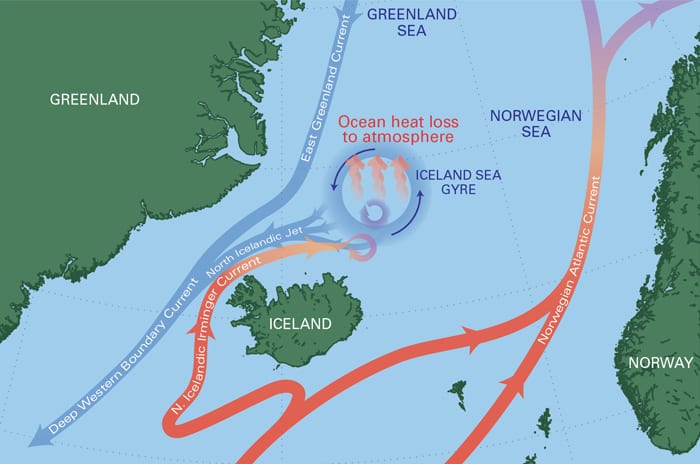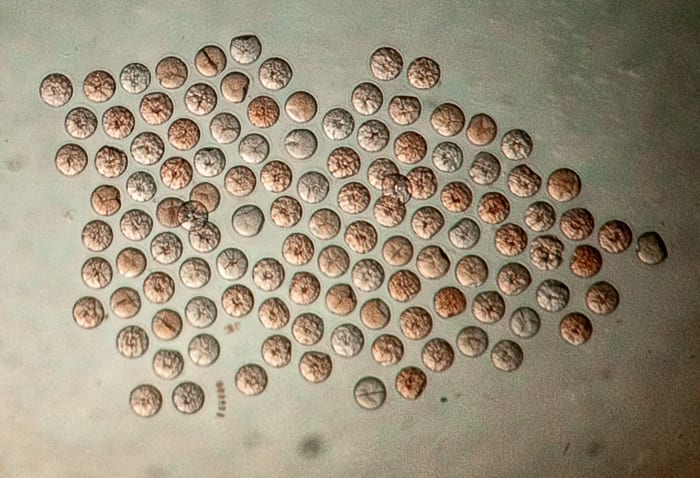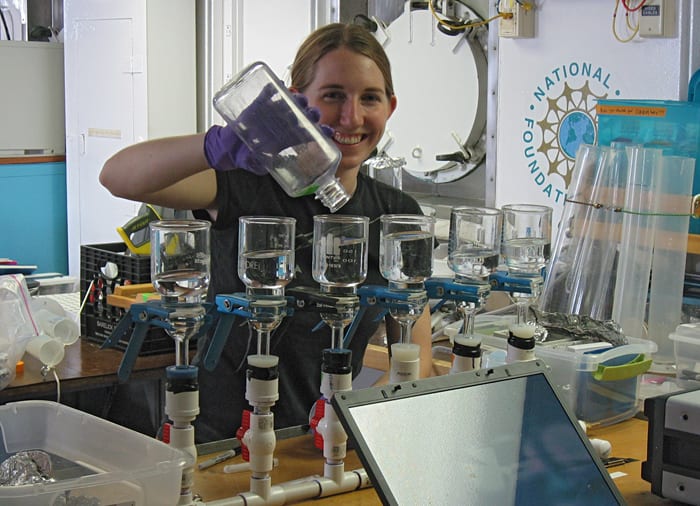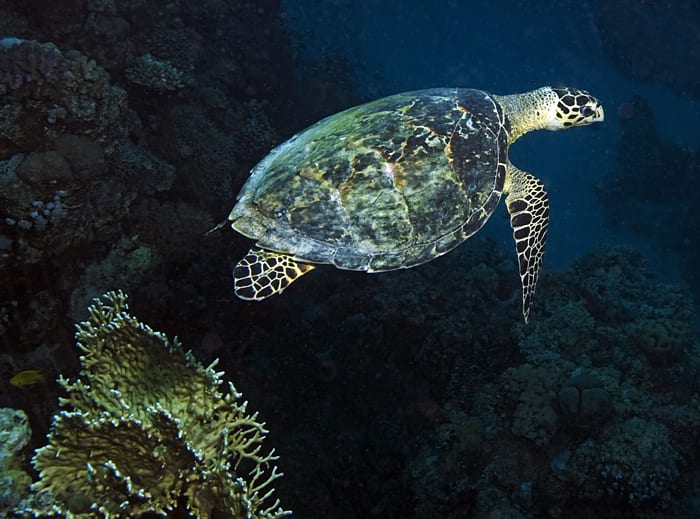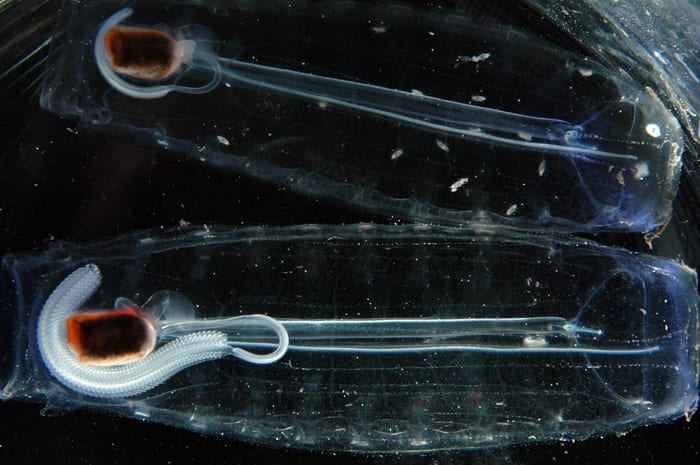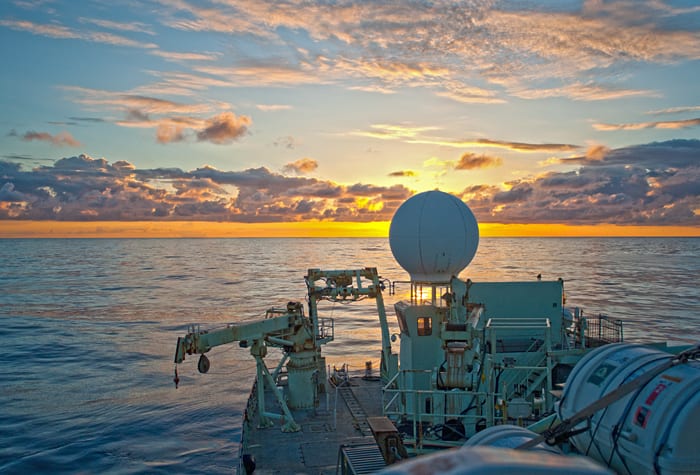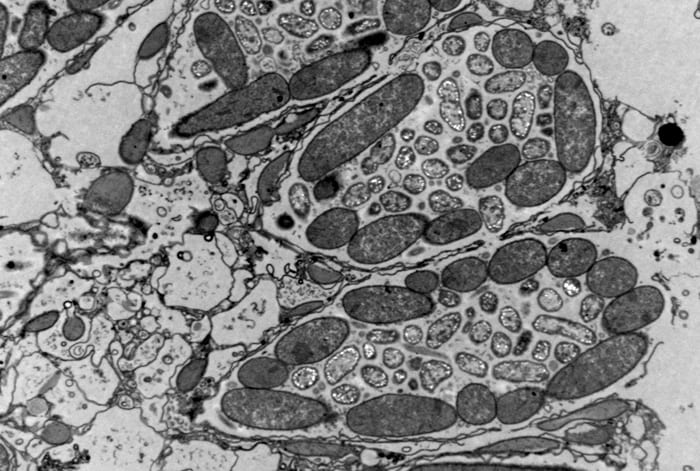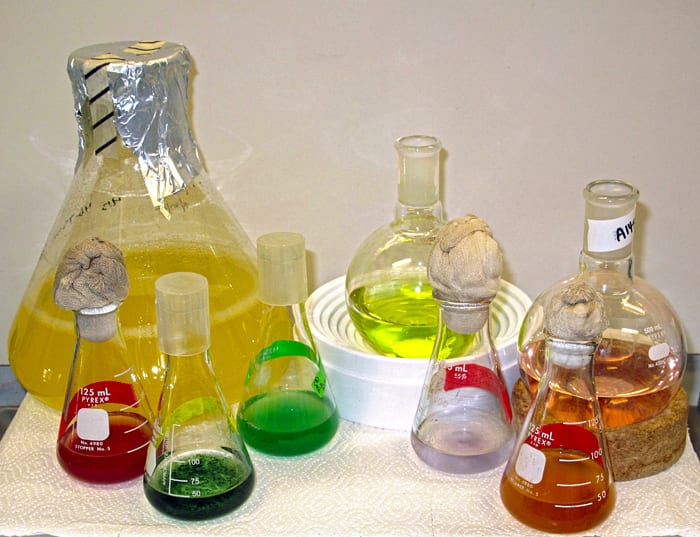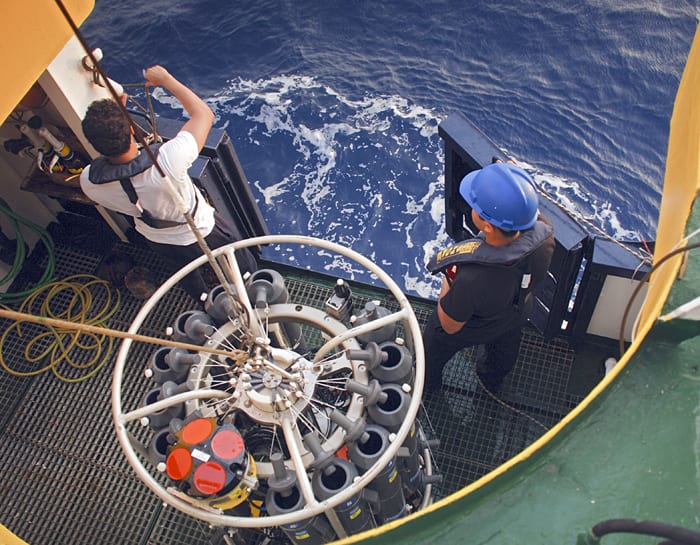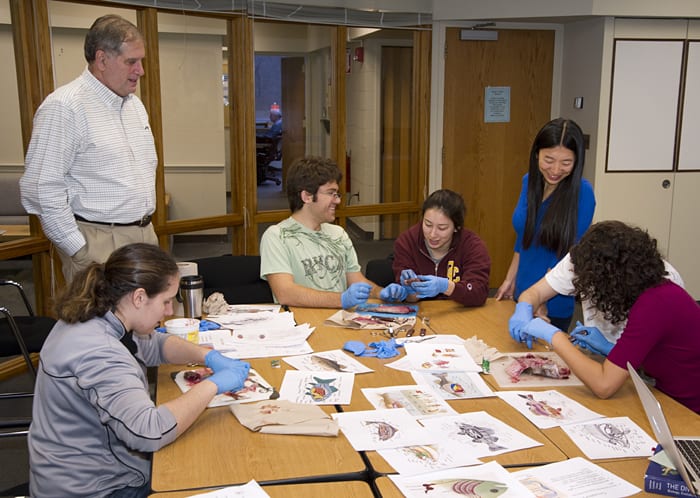Multimedia
The Original Titanic Map
Following the 1985 French-American expedition that discovered the wreck of Titanic, WHOI researchers William Lange, Elazar Uchupi, and Bob Ballard examined all the still and video images captured by deep-sea…
Read MoreTwo Leaders, One Boat
Two of WHOI’s original and most storied leaders teamed up to pull the Insitution’s pioneering original vessel Atlantis away from a Woods Hole dock. WHOI’s first director, Henry Bigelow, (at…
Read MoreHidden Secrets
This seemingly solid expanse of ice actually presents a complex oceanographic problem. Surface meltwater flowing through and beneath Helheim Glacier on the left side of the cliff in the center…
Read MoreLimpet Pools
Students in the MIT-WHOI Joint Program spent 12 days exploring a remote Panamanian island in January 2011. As part of their coursework, (from left) Li Ling Hamady, Liz Drenkard, and…
Read MoreColor and Flash in the Depths
From the underside, the deep-sea jellyfish Atolla, which can be ten inches across, looks like a flower or a chandelier, not an animal. Atolla is abundant around the world at…
Read MoreAn Icy Ecosystem
In an April 2009 polar expedition, 41 scientists led by WHOI biologist Carin Ashjian set off on the U.S. Coast Guard Cutter Healy to examine how climate change might be…
Read MoreOld School
Crew members sweated out hoisting the anchor on the original research vessel Atlantis, which supported oceanographic research at WHOI from 1931 to 1964. Hauling the anchor was also time consuming: a…
Read MoreThe Great South Channel
Around this time of year, whales and other marine animals find rich feeding areas in the Great South Channel, an undersea canyon between shallower Nantucket Shoals and Georges Bank. Scientists…
Read MoreOcean Explorers Probe Gulf of Mexico
Salp Baby on Board
This transparent animal, a salp lives in the Southern Ocean. White muscle bands crisscross its one-inch tubular body, the brown gut is on the left, and it carries a white…
Read MoreWater on Ice
During a 2008 expedition, glaciologists Sarah Das (WHOI), right, and Ian Joughin (University of Washington) trek toward a lake that formed as ice melts in summer and pools in depressions…
Read MoreA Cyst in Time
WHOI researcher Kerry Norton uses fluorescence microscopy to identify and count dormant cysts of Alexandrium fundyense, the alga that produces a toxin that accumulates in shellfish and can cause paralytic…
Read MoreTougher Than it Looks
This little jellyfish may look fragile, but in its own world it’s a predator, hunting unwary prey and well-adapted to a planktonic life suspended in water. Transparency helps it avoid…
Read MoreSmiles Belie the Trials
Despite smiles on their faces, researchers studying the effects of the 160 million gallon Deepwater Horizon oil spill in the Gulf of Mexico in spring 2010 were having anything but a…
Read MoreCurrent Affair
A 2011 expedition led by WHOI physical oceanographer Bob Pickart confirmed the existence of a previously unknown ocean current called the North Icelandic Jet. It feeds cold, dense water into…
Read MoreCounting Copepods Before They Hatch
Freshly-laid eggs of copepods crowd a petri dish. During a cruise to the Bering Sea in 2009, WHOI biologist Carin Ashjian and colleagues studied the reproduction of the tiny crustaceans,…
Read MoreMicrobes: Chemists of the Ocean
WHOI/MIT Joint Program PhD candidate Kim Popendorf filters seawater to collect microbial cells onboard R/V Oceanus in 2008. Each filter can hold more than 250 million cells—equivalent to the population…
Read MoreGreen Turtle, Red Sea
While diving in the Red Sea in 2009, WHOI biologist Simon Thorrold encountered a green turtle on a reef about 25 miles from shore at the northern end of the Farasan Banks. Thorrold…
Read MoreSeldom Seen, Clearly Important
Salps are seldom seen by people, but these transparent animals are abundant plankton in the open ocean, and may affect the ocean’s carbon cycle. In alternating generations salps reproduce by…
Read MoreSunset at Sea
The sun sets behind RV Knorr during a cruise to the Bermuda Rise in 2011 to work on the Dynamics of Abyssal Mixing and Interior Transports Experiment, or DynaMITE. Chief…
Read MoreMutual Aid
Electron micrograph shows different kinds of bacteria (dark ovals and smaller, lighter shapes) living inside compartments within a ciliated protist. Many marine protists that live in harsh habitats such as…
Read MoreColorful Cultures
Culture flasks containing marine microorganisms could be the source of new treatments for cystic fibrosis, through work recently begun by WHOI microbiologist Tracy Mincer and the Flatley Discovery Lab in…
Read MorePreparing to Go Deep
Saudi Arabian researchers Majdy Hamed Alharbi (left) and Muhammad Ali Al-Ghamdi gathered water samples during an autumn 2011 cruise in the eastern Red Sea. The cruise, lead by WHOI physical…
Read MoreWinter Break at WHOI
A group of undergraduate students came to WHOI to sample oceanography during their 2012 winter break, through the Institutions Ocean Research Experience (ORE) program. The students, from liberal arts colleges,…
Read More
